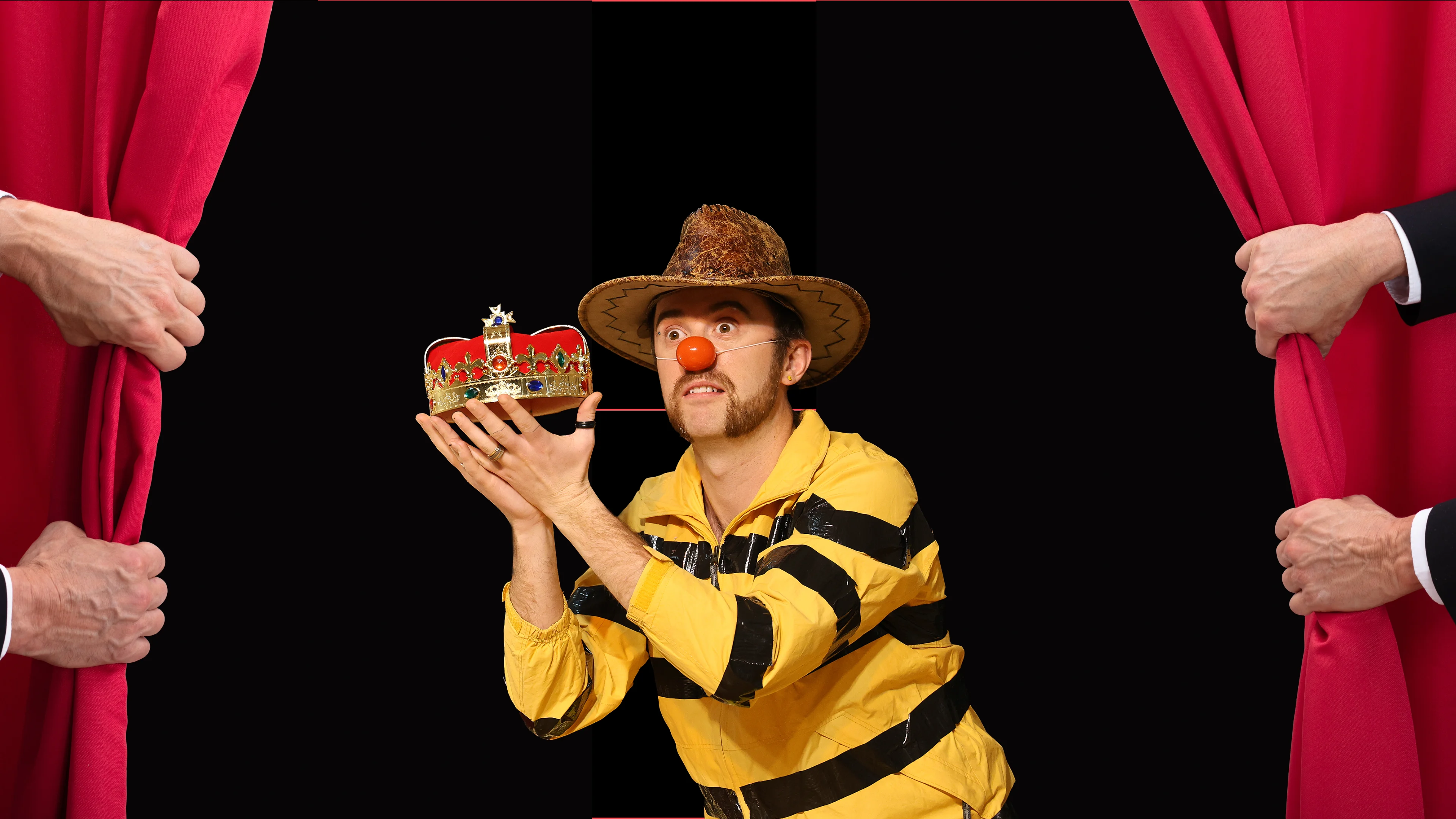
Taster Class In Clown Comedy
Theatre Deli, London
Learn More

Comic subversion is the art of setting up an expectation and then breaking it in a way that’s funny. It’s one of comedy’s oldest engines — take what the audience thinks will happen, twist it, and reveal something unexpected.
Comedy thrives on incongruity. Our brains love to predict patterns, so when you give them a clear setup (a relatable situation, a familiar trope, a predictable outcome), you invite them into a mental “contract”. The laugh comes when you break that contract — not randomly, but in a way that makes sense in hindsight. This is why grounding is important: without a shared reality or pattern, there’s nothing to subvert.
Rug pull – Lead the audience down one path, then reveal a different reality at the end.
Subverting tropes – Take a cliché and flip it (“What if the supervillain was just really lonely?”).
Parody in a new context – Map one genre or world into another for comic contrast (e.g., a gritty detective drama set in a crèche).
Role reversal – Swap power/status roles so the expected authority is clueless or powerless.
Escalation into absurdity – Start reasonable, then keep pushing until the logic collapses into silliness.
Stereotype subversion – Set up a stereotype and then dismantle it with the truth or with an unexpected behaviour.
What-if scenarios – Explore an alternate reality that flips something we take for granted.
Genre mash-up – Combine two genres whose rules clash (a Jane Austen zombie musical).
Set the expectation clearly – This is your “A” step. It needs to be recognisable and grounded.
Add tension – Heighten the expectation through repetition, escalation, or emotional stakes.
Flip it – Deliver the surprise (“B” or “C” step) at a moment that catches them off guard but still makes sense.
Deal with the consequences – Sometimes the fun is in the aftermath, mapping out what happens after the twist.
Quick, punchy subversions often work best when the setup is something familiar:
Example: Moving a damp finger around a wine glass is meant to make a pleasant note — instead, the person makes an awful noise with their mouth. The wine is fancy, the clothes are fancy, and the noise is hideous. That gap is the laugh.
Clown – Subversion can be immediate and physical (e.g., preparing for a grand stunt and then tripping over your own shoelace).
Improv – Breaking an expected game move or character choice at just the right beat.
Sketch – The whole premise might be a single subversion, escalated over the scene.
Stand-up – Punchlines are often micro-subversions of the setup.
Character comedy – Subvert your own established persona to reveal an unexpected side.
Anchor the subversion in something the audience can predict — without that, it’s just randomness.
Sometimes the twist works best late in the sequence; early flips can feel confusing.
The clearer and more specific the setup, the harder the laugh when it’s broken.
You can chain subversions — each flip sets up the next expectation.
